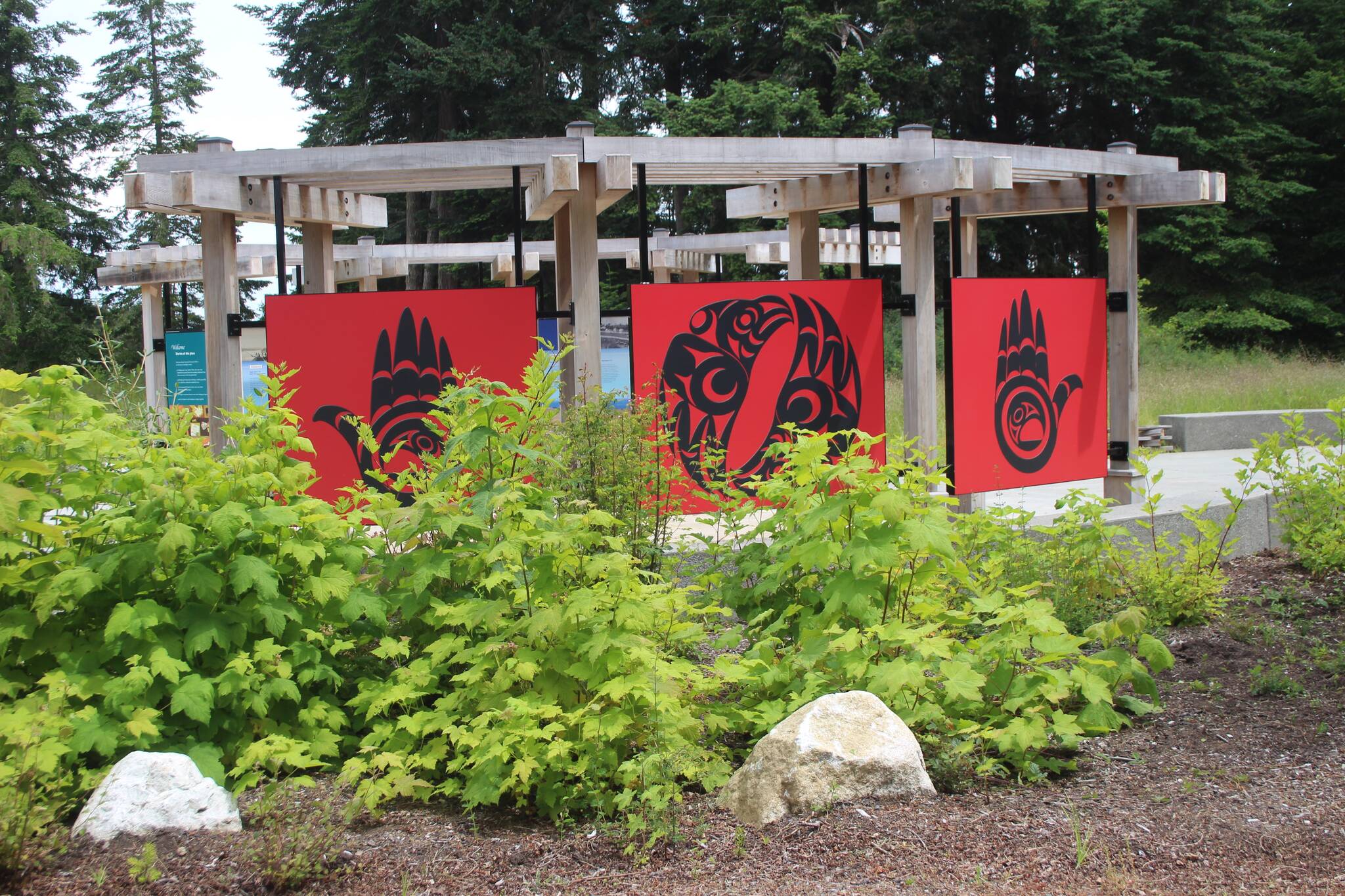The National Historical Park Service is unveiling a new look complete with fresh engaging exhibits both inside and outside the visitors center.
“This was a once-in-a-lifetime opportunity,” Elexis Fredy, National Historical Park Service Superintendant, said. “I really want our community to be proud of this visitors center. It will be like nothing else on the island.”
Since the building itself is already complete and has been opened to the public for over a year, the park is doing a soft opening Thursday, June 23, essentially unlocking the doors to reveal new displays.
The revision has been six years in the making. Two of those years were in the midst of a pandemic. Despite the global chaos, staff and volunteers continued on. Exhibits were designed, and frequent Zoom meetings were held with the tribes of the area. Several local and regional artists created murals and illustrated panels, Those artists include Larry Eiffert, Elizabeth Person as well as Native American artists like Lummi Jason Laclair.
“We really wanted to make sure that people understand these are not long ago people, they are still here with thriving cultures,” Fredy said. For example, an audio exhibit goes along with an archeological display so visitors can learn the words of each item in the different Coast Salish languages. The Lower Elwa Kl’llam, the Lummi Nation, Jamestown S’klallam, Port Gamble Sklallam, Samish, Stillaguamish Tribe of Indians, Swinomish Indian Tribe, and Tulalip tribes of Washington all were involved in the project, according to Fredy. “Working with the tribes has been the cornerstone of the project,” she said.
With the Coast Salish in mind, a new welcoming sign is being installed outside the visitors center that was intensely reviewed by tribal representatives that reads “You are in ancestral lands of the local Coast Salish Tribes. Since time immemorial, Coast Salish Tribes indigenous to this area have called the San Juan Islands home. We extend our respect to their descendants and future generations who will continue their lifeways on these islands.”
“San Juan Islands National HIsotircal Park raises our hands” and thanks all who visit this extraordinary place. We invite you to explore, learn, recreate, and ask you to tread lightly and respectfully on these sacred grounds.”
In the past, the park has given a very polished, cheery version, Fredy explained. There is more to the story that has not been told. “We didn’t shy away from the hard topics,” Fredy said, adding that at one time, the San Juans were very ethnically diverse, with the Coast Salish, Hawaiians and other laborers. “There is more here than meets the eye.”
Along with the welcoming sign outside, exhibits regarding the surrounding natural habitat will also be displayed. Signs detailing the parks prairies, sand dunes, coastal bluffs, forests, intertidal lagoons and surrounding ocean life.
“If we are not there, if the visitors center is closed, it should not impede somebody from learning,” Fredy explained.
The signage touches on endangered species in the area like the Island Marble Butterfly. There are also warnings against letting dogs off-leash, disturbing ground-nesting birds and encouraging guests to leave no trace.
“Our goal in the next year and a half is to ensure landscapes like the prairies not be diminished. Invasive species have moved in, these ecosystems are vulnerable,” Fredy said.
The plaza area now has a timeline telling the story, of how the islands got to where it is today.
The timeline purposefully details large chunks of time, beginning with the Coast Salish, white settlers, companies such as Bell Vue Farm and Hudson Bay, and of course the Pig War.
“The US was considering purchasing all the islands to protect them, until about the 1950s,” Fredy said. By that time many of the natural resources like fishing and logging were becoming depleted.
Inside will feature replications of artifacts and interactive displays as information on “unheard voices,” incredible islanders many may not know much about, like Poalima Friday, Friday Harbor s namesake; Marge Chevalier, indigenous Coast Salish from Mitchel Bay and accomplished fisher; Eliza Jakle, [Jackle’s Lagoon] Cattle Point farmer and James Tilton Pickett, the artist son of General George Pickett. General Pickett is well known for his role during the Pig War.
The Pig War has not been forgotten in the midst of the park’s incorporation of additional history. In fact, Fredy said, the exhibits explore in-depth the events that lead up to and occurred during the boundary dispute. There will be displays discussing the cost of diplomacy, regardless of the fact no shots were fired.
“It happened right in the middle of the Civil War and the government did not want to get involved in another battle,” Fredy said.
Two exhibits will not arrive till the fall, however, and with that, Fredy thought a local celebration after the summer busy season would be more appropriate than a grand unveiling in June. Stay tuned for updates about that, and the arrival of the two additional pieces.
“The staff is really excited about this new era of interpretation,” Fredy said. ‘In the next couple of years, we are hoping to do a similar project at English Camp.”



